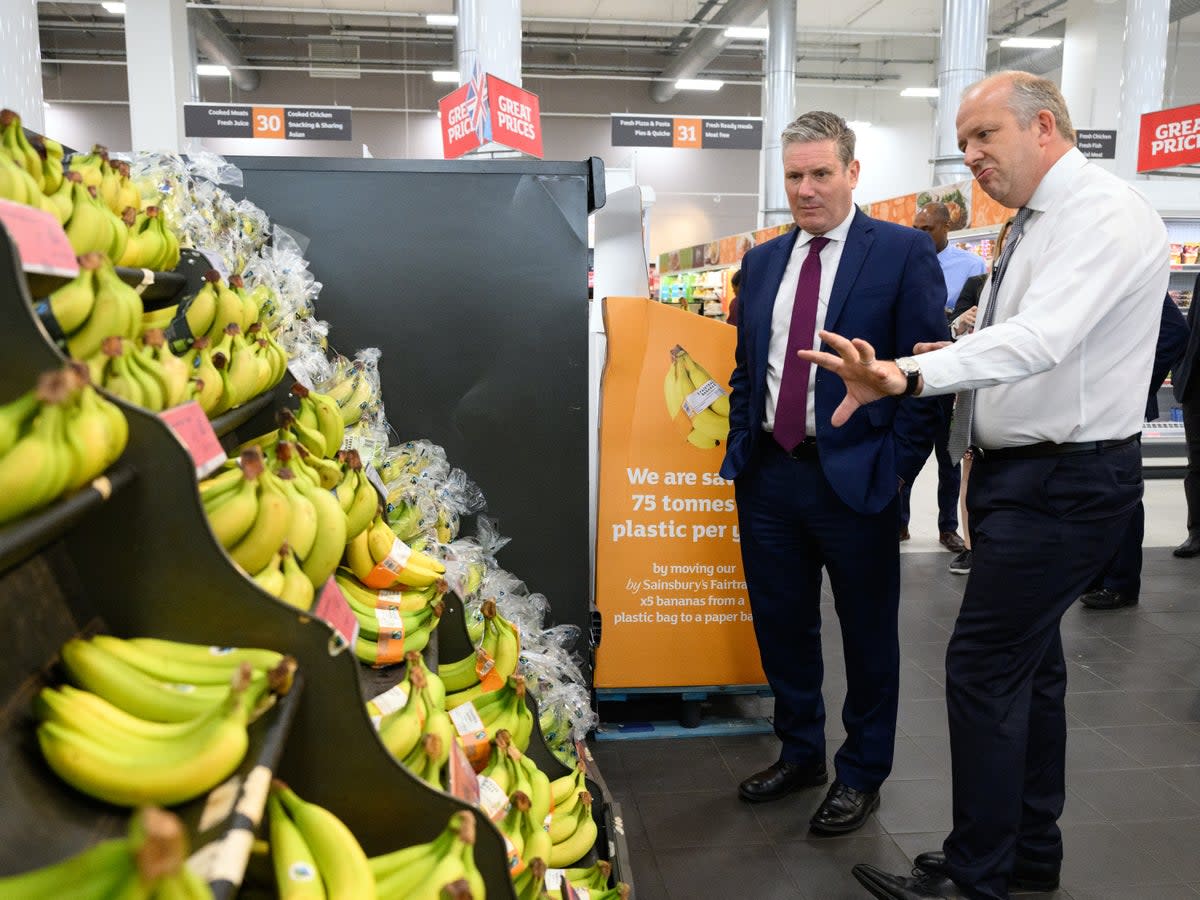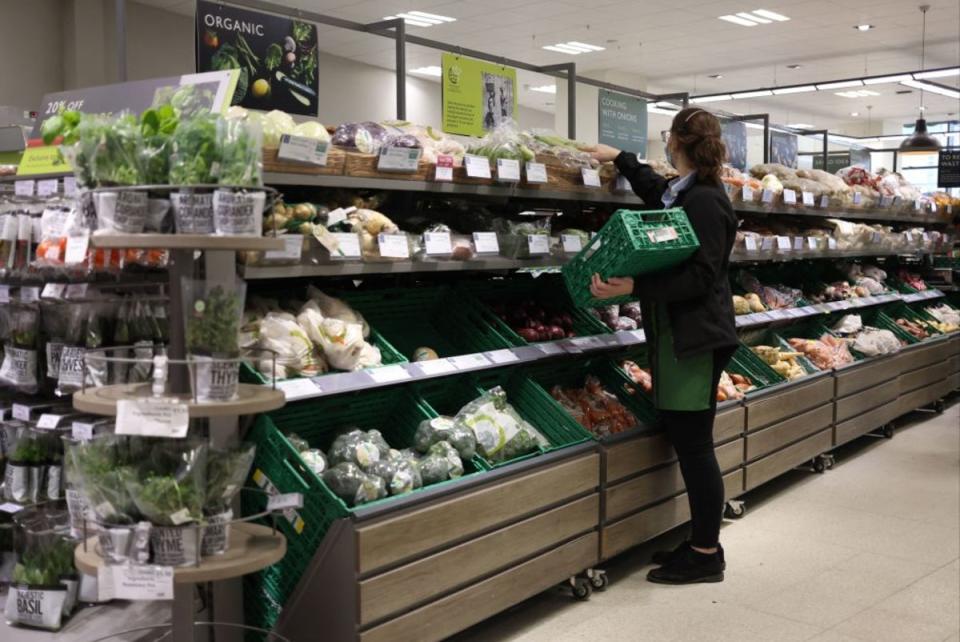Waitrose for Tories and Lidl for lefties? What your supermarket reveals about your politics

The last bastion of unshakeable Tory support? The aisles of Waitrose, apparently. According to a new poll, the shop, which sells gooseberry fool and halloumi in its “essentials” range, is now the only major supermarket with a majority of Conservative customers. Researchers at GlobalData found that Tesco, Sainsbury’s, Lidl, Aldi and Morrisons have all swung to Labour since a previous poll in 2019, with upmarket online retailer Ocado now claiming the highest proportion of Labour voters (closely followed by Lidl and Iceland, whose boss Richard Walker recently publicly switched allegiances from Tory to Labour).
Keir Starmer’s party, it seems, has pulled off a real supermarket sweep in the years since the last general election, when it could only count on majority support from shoppers at Asda, Iceland and the Co-op. “If supermarkets were seats, Labour would be on course for a landslide victory,” claimed GlobalData’s lead retail analyst, Zoe Mills. Meanwhile, Reform has apparently overtaken the Liberal Democrats to become the third most popular choice in all supermarkets bar Sainsbury’s, and Aldi and Marks & Spencer have the biggest share of Green voters. Rishi Sunak, of course, is so astronomically wealthy that he probably wouldn’t think twice about doing the big shop at Fortnum & Mason or in Harrods’ food hall – although he might have trouble using contactless payment at the till.
News of Waitrose shoppers’ conservatism is unlikely to leave anyone choking on their Duchy Organics biscuit (itself a case in point: somewhere that stocks products from the King’s side hustle doesn’t exactly scream radical politics). If you use supermarkets as a broad-strokes political shorthand – by making assumptions about someone’s beliefs based on how much they’re willing and able to spend on their weekly shop – then Waitrose has always been Tory-coded.
Why? It’s a bit of a “Which came first, the chicken or the free-range Burford Brown?” situation. Is Waitrose fundamentally, inherently posh, with its immaculate aisles filled with aspirational artisan produce and its snack range featuring celeriac remoulade? Or did its stores just always tend to be concentrated in the traditional Conservative heartlands (before the brand embarked on expanding across the country, that is), and therefore inevitably draw in a staunchly upper-middle-class, Tory-ish crowd? Waitrose’s prices are perhaps the most important factor at play. It reliably tops the rankings as the UK’s most expensive supermarket, therefore attracting a wealthier class of shopper. In the last general election, homeowners were more likely to vote Conservative; overall, higher incomes tend to correlate with right-wing views.

Imagine the stereotypical Waitrose shopper and you might picture, say, a middle-aged couple in a Range Rover, possibly accompanied by their kids (christened after Shakespeare characters and / or figures from Greek myths and legend). They’re on the hunt for something that will cook up nicely in the Aga. In their second home.
This idea of the Waitrose shopper as a posho has only been further ingrained by the popularity of social media accounts like “Overheard at Waitrose”, where shoppers can anonymously submit the very niche, very monied problems they’ve eavesdropped on (think kids begging their parents for venison sausages or wine snobs soliloquising about how Prosecco is so passe). Some of them seem so parodic that you have to wonder whether they actually took place, or whether the author is simply playing up to the online audience – did a child really ask “Daddy, does lego have a silent ‘T’, like merlot?” Still, there’s some evidence to suggest that – despite the supermarket’s reputation – even the Waitrose warriors are starting to become weary of the Conservatives. In 2019, the Tories had a 36.4 per cent lead over Labour among Waitrose shoppers. Now it has dwindled to 1.2 per cent.
Of course, political beliefs are much more complex and nuanced than any allegiance to the place where you get your groceries. And yet parties are still obsessed with using supermarkets as a snappy (but let’s face it, slightly cringe) way of summing up a certain voting demographic. The Liberal Democrats are reportedly aiming to go after both the “Waitrose woman” – a home counties, traditional Tory voter who might be feeling disillusioned by the present government – and the “M&S movers”. The latter category apparently describes young couples who have moved out of London to the home counties in the wake of the pandemic, in order to raise their families. According to a leaked document, they also feel strongly about “Gary Lineker and his causes” (presumably the liberal views he tends to share on social media, rather than his long-standing commitment to Walkers crisps –available at your local Marks and Sparks, of course).
It’s enough to leave you wondering what other shopping stereotypes might be cropping up in campaign materials in party HQs, and where you might fit in (I’m a lukewarm Lidl-goer, so the data says I’m likely to be, erm, a lidl to the Left). As for which of these trolley-pushing tribes will be the ones to swing the election? We’ll have to wait until 4 July to find out.


